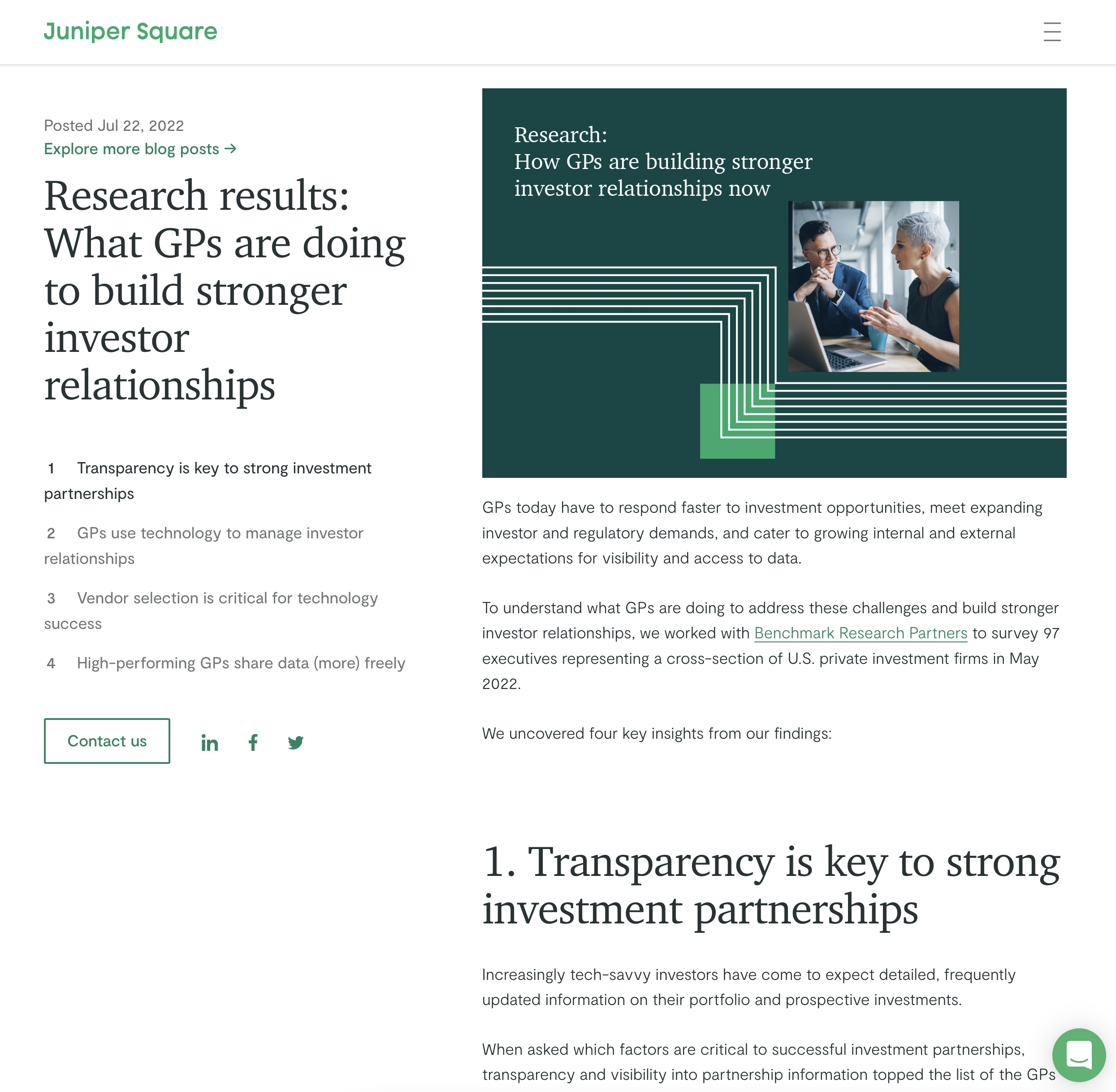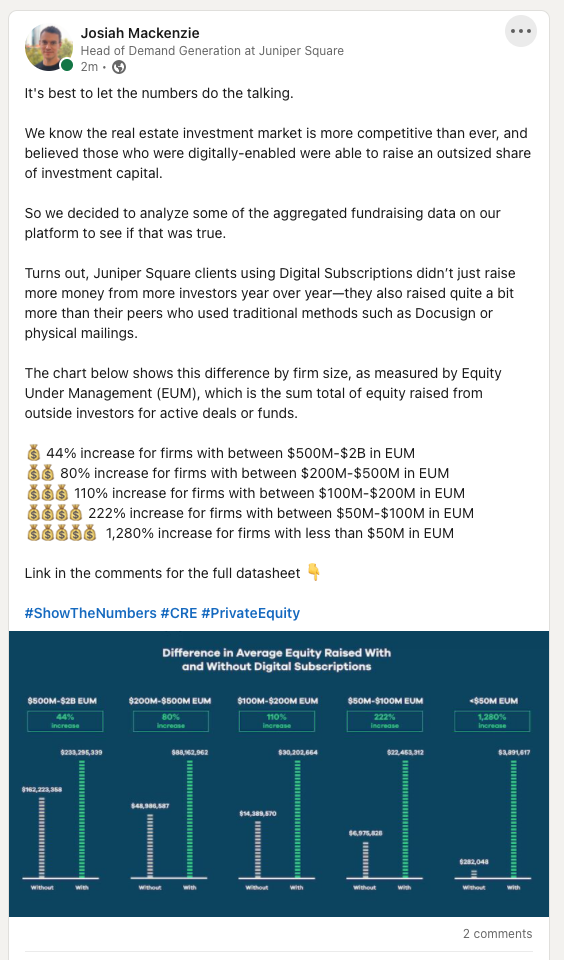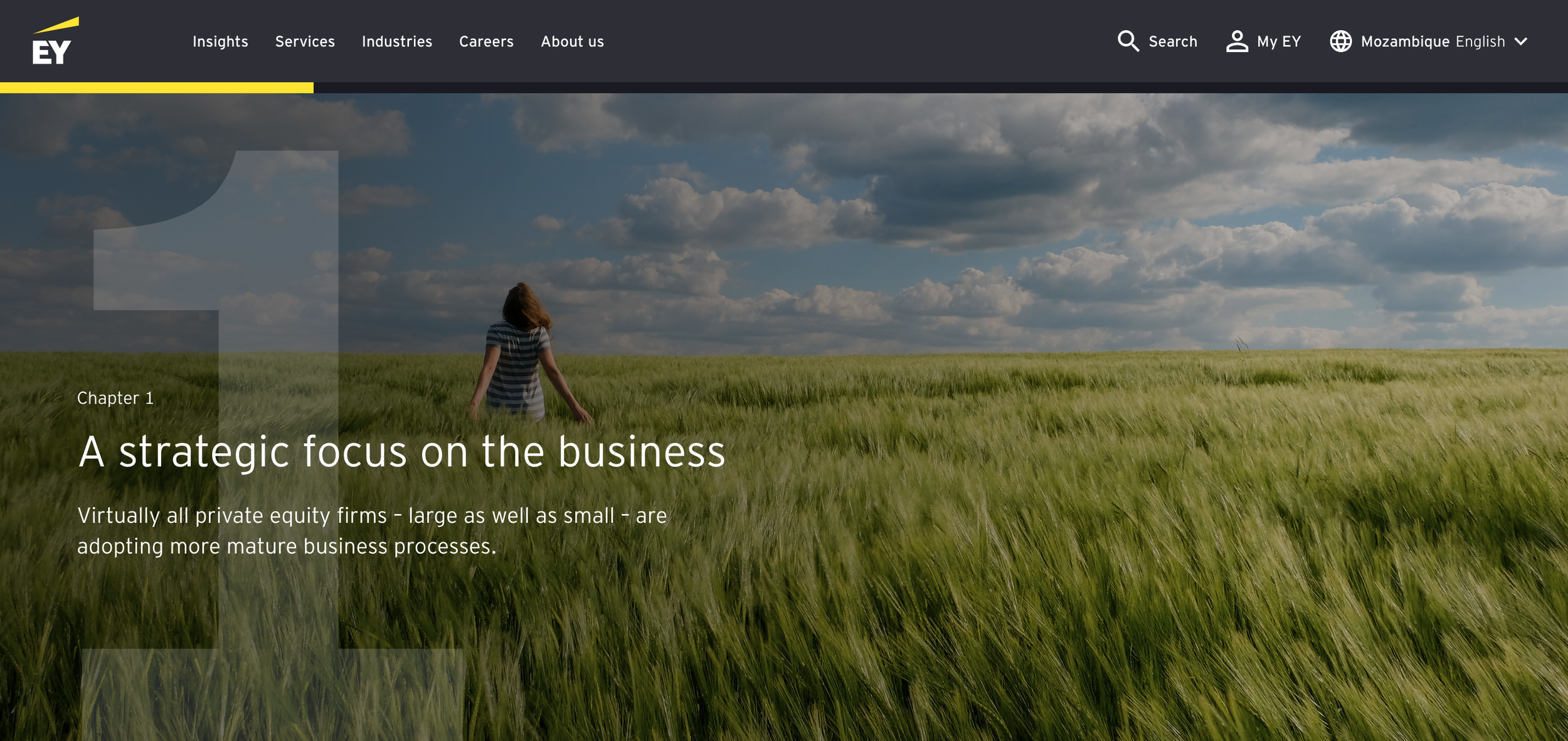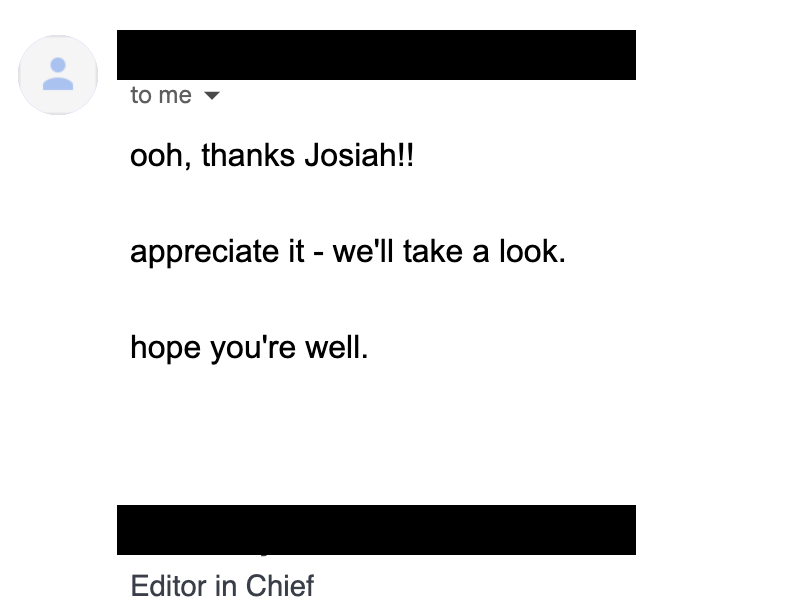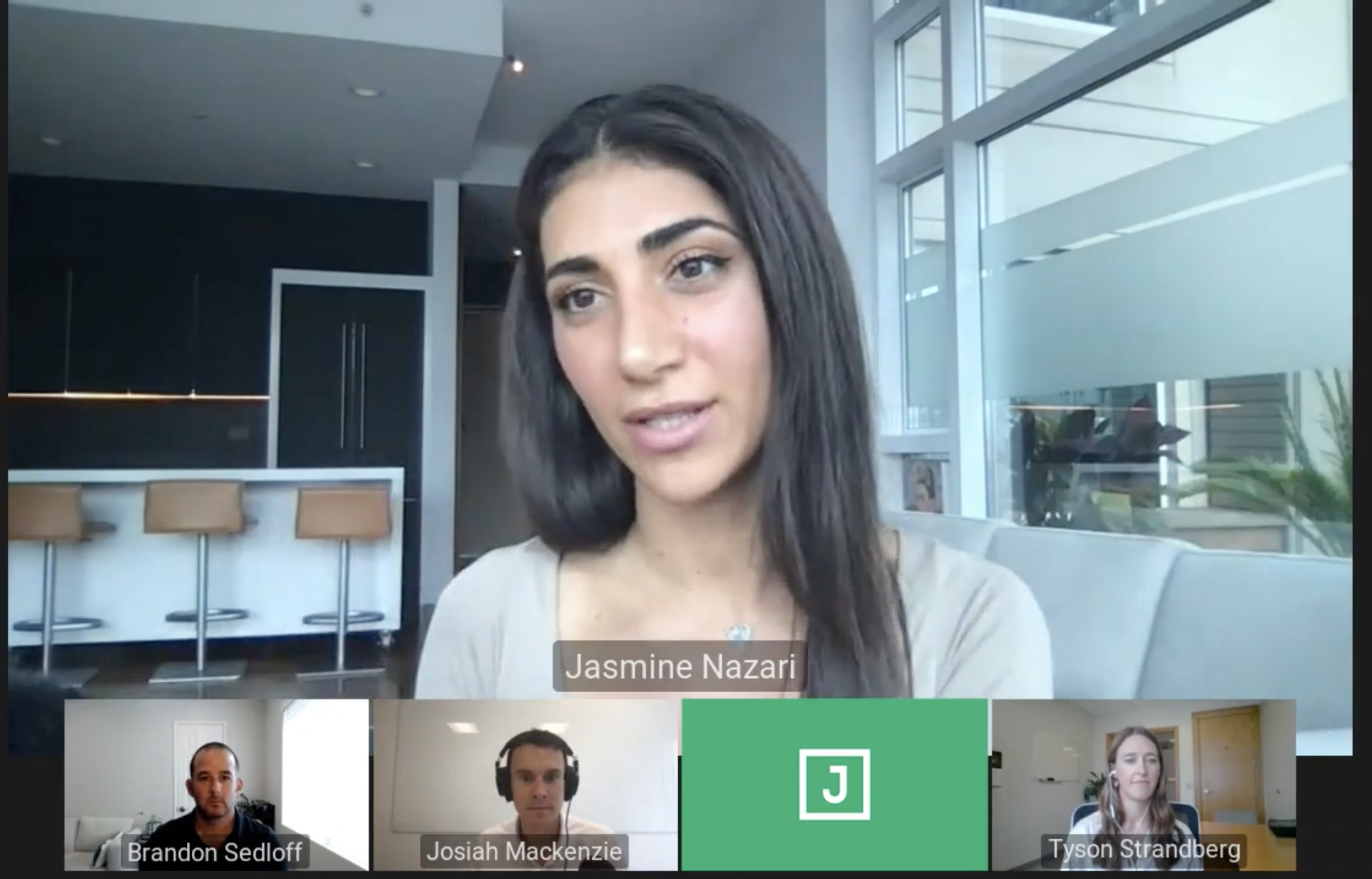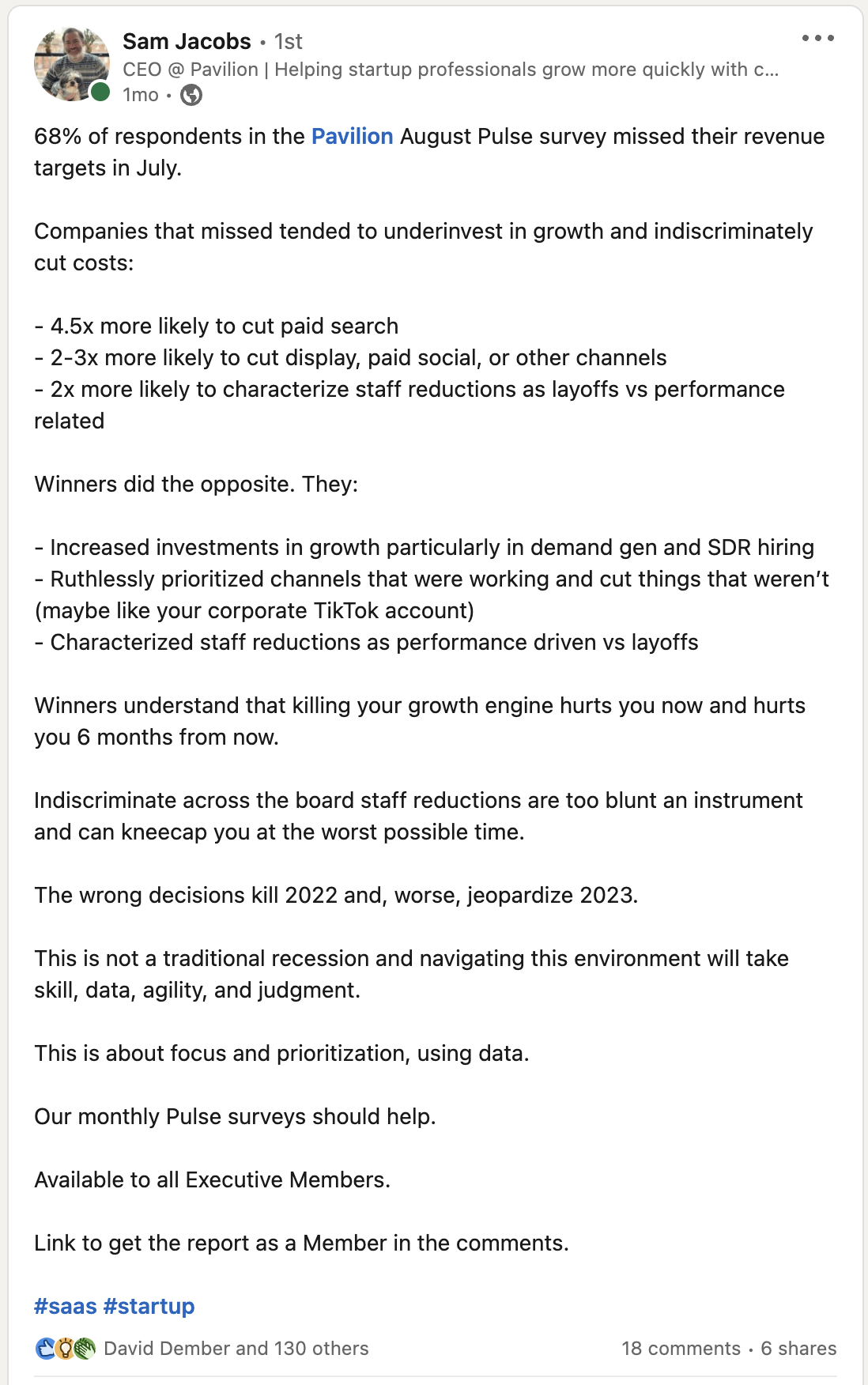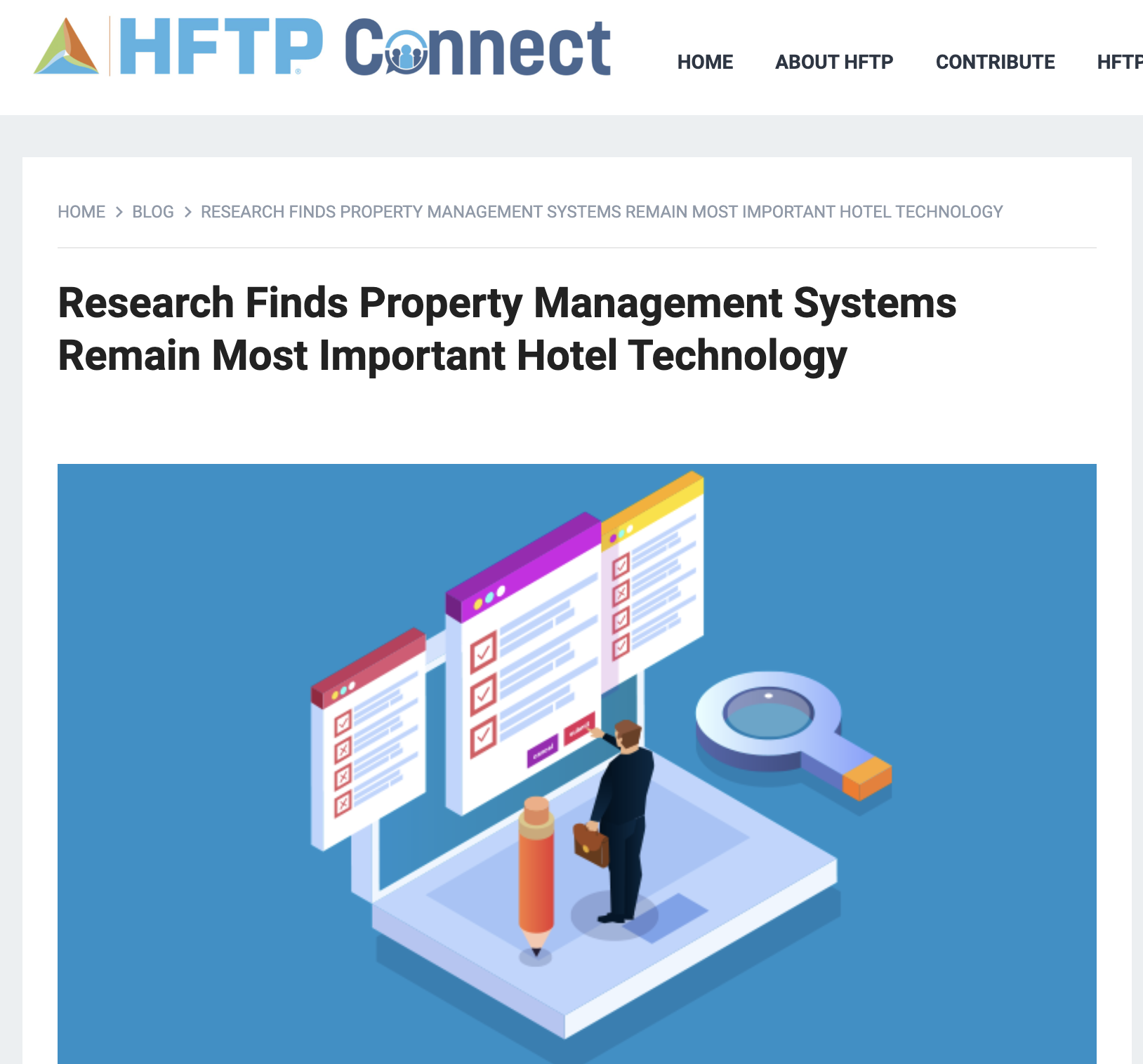How to get more people to see your research
Research is a powerful way to understand your market, earn attention, and prove your value. Research also benefits participants, because survey data can show what others are doing, seeing, and planning.
But without marketing, research results will only reach a fraction of the people they otherwise could have. Promotion is key for unlocking the potential of these programs.
Here is the process I use to promote research survey results and make sure it reaches the people it should reach.
Identify the storyline(s)
Analyzing the data and then interpreting what it means needs to come before anything else. Without clarifying the insights, you’ll lose both reach and the outcomes you’re hoping for.
Identifying insightful storylines requires both data analysis and industry expertise, and collaboration is key at this stage.
In most research, you'll find dozens of interesting data points. The trick is figuring out which ones to focus on.
Some questions to ask:
What’s new in this data?
What is surprising?
What confirms a belief we have?
What disproves something we thought was true?
Create supporting content
When planning content to create, consider what has worked in the past on other campaigns - as well as new content formats that could work well on new media channels you'd like to try.
There are many channels and formats you can use to share the results of your findings:
Blog posts & articles
Social media posts
Reports
Landing pages
Email
Let’s take a quick look at each…
Blog posts & articles
Blog posts can be a good first step to sharing key insights from your research, as they are ungated and easy to point people to from other channels.
Example of a blog post from Juniper Square
Social media posts
Market insights from surveys tend to do well in social media, especially when supported with compelling graphics.
You can share findings that show overall industry trends, but don’t shy away from also showing evidence that your solution is driving performance for your clients. Here’s an example of how I did this at Juniper Square:
Reports
Reports can be as detailed as you want them to be. I’ve had success both with simply copying/pasting charts of survey results in a Powerpoint presentation PDF, and also spending much more time developing long-form editorial with viewpoints from internal experts and industry voices.
The benefit of creating a downloadable report is that you’ll have an asset that’s easy to share and works well as a gated asset to drive leads.
Example report from a project with Shiji Group
Landing pages
You may decide you want to share your insights in a public, ungated format to maximize reach. The 2022 Global Private Equity Survey by EY does this, displaying their findings as a beautiful, open landing page with infographics and editorial throughout.
Whether you take this approach or are promoting a gated asset like a downloadable report or webinar, a landing page is a helpful asset to point people to from social posts or other types of short-form content.
Email can be used either to share insights from the research or drive action, such as reading a blog post or downloading the full research report.
I’d suggest testing different calls to action in your email depending on the other content you’re producing. Don’t overlook the value of raising awareness of your findings by sharing insights in the email body itself, but balance this with the need to drive engagement (or whatever your goal is for the project).
Optimize for organic search discovery from the start
While a lot of digital media is ephemeral, the findings in your research are likely valuable for months, if not years to come. I suggest optimizing for organic search discovery from the start to earn ongoing benefits.
This involves:
Identifying what keyword(s) you want to rank for
Being thoughtful about the structure of your content
Above all: being useful and valuable to your readers
Google rewards usefulness more than ever, so SEO today is less about hacking their algorithm but rather clarifying what your story is about and how you can present information in a clear and valuable way.
Engage the media
Journalists love new data that provides fresh insights about an industry or trend. That’s why engaging journalists should always be a cornerstone of any research marketing plan.
Example press coverage for a Juniper Square survey
Effectively engaging the media requires a few things….
Prepare the pitch
I’ve found the most success summarizing a few key points in a short email to journalists:
Why did we conduct this study?
Why should they care about this?
What are a few points that stood out to me?
Ultimately I want to invite them to review the research data, which leads to my next point.
Example response to a pitch from an industry media editor
Provide early access
Journalists love breaking news and creating valuable, original stories, so provide early access to help them do that.
If you have other content created (above), sharing this with them can also help show potential storylines they could be interested in.
Clarify your needs
Depending on your goals for distribution, you may want to point readers to a landing page where people can download the full study results. If this is the case, make sure you’re clear on what data journalists can share in their stories and what you’re asking in return.
And be clear on embargo dates in case you want them to hold a story for a coordinated launch date (something I recommend).
Example of media coverage from survey results
Host an event
Events can be a catalyst for creating many (or all!) of the content assets above. One webinar typically provides more than enough content for blog post(s), video for social and YouTube, social posts, and more.
I like to invite both internal subject matter experts and external industry participants to speak about the survey results, as we did with Juniper Square’s investment partnerships survey:
Example of a research-driven webinar with Juniper Square
And as we did with that one, it’s easy to create a supporting blog post and video clips that help reach even more people.
Team enablement
This is a secret weapon! Research can be a powerful way to empower your team to engage their contacts, whether that is customers or prospects. Failing to spend time to enable your team diminishes the opportunity to reach people - and educate your team.
Create a summary document
For each research project, I typically create a one-page document that includes:
Why we conducted this research
What we learned (top 3-5 insights)
Talking points for each team (sales, customer success, etc)
Data points and copy snippets they can use in emails and social media posts
Links to other assets such as marketing materials or program participants in your CRM
(Over)communicate
Once you’ve drafted your enablement materials, don’t be afraid about over-communicating the findings. In addition to sharing the highlights above via email, Slack, and other internal communication channels, I also like to join internal team meetings to talk through the project and answer any questions.
Getting buy-in from your team leaders and your front-line associates is key here.
Coordinate your launch day
The people you want to engage are likely connected with multiple people on your team on sites like LinkedIn. By everyone posting about the research on the same day you expand reach.
The team at Pavilion did a great job with this on a recent survey we did:
Leverage industry relationships
I’ve found industry media and associations to be powerful distribution channels in the hospitality and commercial real estate industries.
Once you have survey results ready to share, reach out to industry groups you are affiliated with or advertise with, and ask about ways you can share your valuable data with their members or readers.
In my experience, they often see the value and are happy to share as a resource.
Example of research on property management systems for hotel industry association
Incorporate results into automated touchpoints
Many organizations use automated email sequences as a follow-up to provide value to new people who engage with them. This can be a timely way to introduce new people to what you found in your research.
Additionally, many software companies build customer training or customer success programs with best practice guides. These can be relevant places to include benchmarking information that your audience can use for planning and running their business.
Boost results through advertising
While the shelf life of any content is finite, you can drive ongoing engagement and demand by promoting your research through advertising. In my experience, research often drives more engagement, clicks, and action than most other marketing assets.
The three types of advertising I’ve found most effective are:
Social media. The strategy for effective social posts described above applies here but advertising allows you to target the companies and buyers that are a good fit for your organization.
Sponsored emails. As mentioned above, industry associations and media may have targeted audiences, and the format of email is conducive to direct calls to action to drive engagement.
Podcasts. I’ve had success working with influential people within an industry in having them share valuable survey findings with their audience. To track referrals, I typically register a vanity domain name and have them read that out on air.
I hope this helps you
Research can be a very powerful tool, but without marketing, it misses the potential of what’s possible.
If you have any questions or are looking for help with this, let’s talk.


